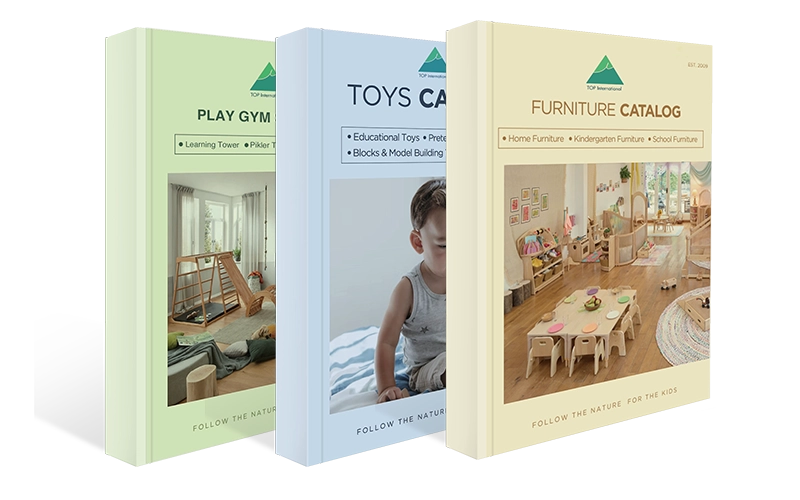Is free play just a fun break between lessons, or is it something more? Can children truly learn through unstructured, child-led activity? What if the key to creativity, emotional growth, and intelligence isn’t in worksheets or apps but in pretend kitchens and block corners? And how much of that learning depends on the classroom environment we create?
Free play is one of the most potent drivers of child development. It boosts creativity, enhances emotional resilience, encourages social learning, and lays the foundation for lifelong cognitive growth—all through child-led activity.
If you’re an educator, preschool operator, or procurement manager, understanding how to support free play through design and resources isn’t just good practice—it’s essential.

What is Free Play?
Free play refers to unstructured, voluntary, and child-initiated activity. It’s the kind of play where children decide what to do, how to do it, and for how long, without direct adult control, predefined goals, or pressure to produce results.

This kind of play often looks simple on the surface:
- A child builds a tower out of blocks and then knocks it down.
- Two children pretend to be a family going to the grocery store.
- One child talks to their stuffed animals about a made-up world.
But underneath that simplicity is something compelling.
Free play is when children practice being human. They learn to express themselves, explore ideas, test boundaries, and make sense of the world around them.
Research shows that when children are free to play this way, they learn deeply, not just pass the time. Whether it’s problem-solving, emotional regulation, or collaboration, all these skills are embedded in free play.
In early childhood education, this kind of play is especially critical. It’s how children naturally grow their brains, bodies, and relationships.
The Science Behind Free Play in Early Childhood
The early years of a child’s life are a time of rapid brain development. Neuroscience tells us that more than 1 million new neural connections form every second in the first few years of life. And one of the key things that drives this development? Active, engaged, meaningful play—especially when it’s self-initiated.
Let’s break it down:
Cognitive Development
When children engage in pretend play—for example, pretending a stick is a magic wand—they practice symbolic thinking, a foundational skill for later reading, math, and science learning.
Activities like sorting, stacking, or building with blocks also boost executive function—the ability to plan, focus attention, remember instructions, and juggle multiple tasks. These skills are better developed during open-ended activities than during rigid instruction.
Language and Communication
During dramatic play scenarios, like “playing school” or “being a doctor,” children naturally use more complex language. They learn to negotiate roles, express feelings, ask questions, and tell stories.
In bilingual or multilingual classrooms, we often see children switch languages fluidly in role-play, reinforcing communication and cognitive flexibility.
Social-Emotional Development
Free play allows children to test out real emotions in a safe environment:
How does it feel when someone takes your toy?
What do you do when someone won’t share?
How do you comfort a crying doll?
Children build empathy, resilience, and self-regulation by acting out these scenarios.
They also learn to navigate power dynamics, inclusion, exclusion, and fairness—all without adult interference. This helps them develop a strong sense of agency.
Physical and Sensory Development
Let’s not forget the physical side. Climbing, running, digging in sand, and water play are all gross motor and sensory activities essential to a child’s overall development.
Children need movement. Not only for physical growth but also to anchor their learning. A child who is physically engaged is more likely to be mentally engaged.
In short, the science is precise: Free play activates every central domain of child development—cognitive, emotional, social, language, and physical.
That’s why we strongly advocate for it—not just as a play but as a learning engine.
Free Play vs. Structured Activity
Free play and structured activity are both essential parts of early childhood education. But they serve very different purposes, and confusing the two can lead to a classroom that’s either too rigid or chaotic.
Let’s define them clearly:
The child leads free play. There’s no fixed outcome, adult-imposed rules, or performance expectation. The child decides what the play looks like, how long it lasts, and what materials are used.
The adult designs structured activities. These usually have a learning goal, steps to follow, and a defined result. Examples include matching games, circle-time routines, or crafts with instructions.
Both forms of play can be beneficial. However, in the early years, free play offers unique developmental benefits that structured activities often miss.
Here’s a side-by-side comparison:
| Aspect | Free Play | Structured Activity |
| Led by | Child | Adult |
| Goal | Process-oriented, exploration | Outcome-focused, skill-building |
| Flexibility | Fully open-ended | Follows specific instructions or rules |
| Creativity | High—child imagines roles, stories, uses for objects | Limited—creativity is often pre-defined |
| Social Development | Peer-led negotiation, inclusion, leadership | Often turn-taking or group instruction |
| Cognitive Benefit | High—child imagines roles, stories, and uses for objects. | Task-specific memory or academic drills |
| Materials | High—child imagines roles, stories, and uses for objects. | Often, turn-taking or group instruction |
Many well-meaning adults unintentionally disrupt free play by over-structuring a child’s day:
- Over-scheduling activities
- Interrupting imaginative scenarios
- Offering only closed-ended toys
This stifles creativity and reduces the child’s sense of agency.
Of course, routines and guided lessons are still important, but they must be balanced with ample time for free exploration.
How to Promote Free Play
Creating space for free play isn’t just about removing rules. It’s about intentionally designing time, space, and materials to support self-directed activity.
Here’s how we do that effectively in a preschool or early learning setting:
Protect Time for Unstructured Play
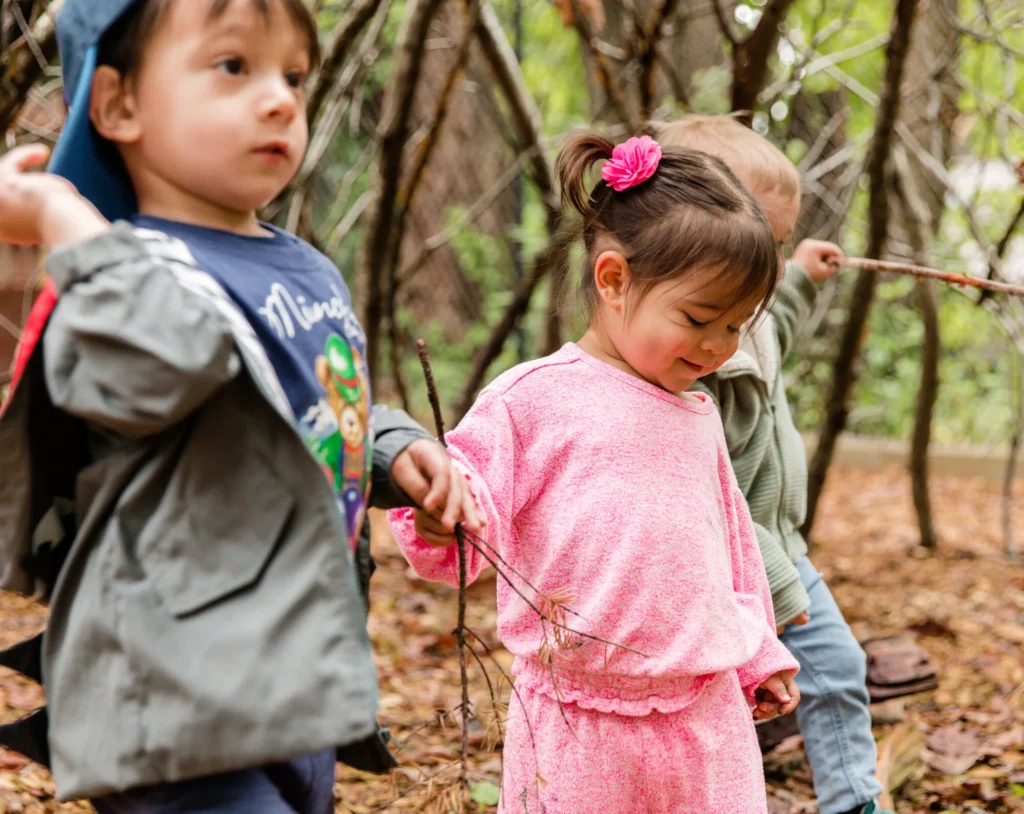
Many early childhood programs fall into the trap of trying to “maximize learning” by filling the day with structured lessons, worksheets, or enrichment activities. But free play isn’t wasted time—it’s where the brain does its most profound work.
We recommend:
- At least 45–60 minutes of uninterrupted, free play daily
- Multiple windows throughout the day (indoor + outdoor)
- Avoid interrupting play unless necessary
When children know they have time to develop their own story or structure, their creativity flourishes.
Design Flexible, Child-Centered Environments
Your classroom or center’s physical layout can invite or block free play.
To promote child-led activity:
- Use open shelving to allow children to choose materials
- Offer natural, simple toys that can be used in many ways
- Avoid clutter—too many choices can overwhelm
- Divide space into activity zones: dramatic play, construction, reading, art, and sensory
Montessori and Reggio Emilia classrooms are the gold standard here. At TOP Montessoris, we draw on these philosophies when designing preschool furniture, ensuring that our pieces are child-sized, flexible, and open-ended.

Choose the Right Materials
Free play thrives on open-ended materials. Instead of toys that do one thing (push a button, make a noise), choose materials that invite creativity.
Some tremendous free play materials include:
- Wooden blocks
- Fabric pieces
- Play silks
- Cardboard boxes
- Loose parts (stones, pinecones, bottle caps)
- Puppets, dolls, animals
The goal is to provide tools for imagination, not distractions.
Step Back and Observe
As adults, it’s tempting to step in and “help” during play. But often, the most helpful thing we can do is observe and hold space.
Instead of directing the child, ask:
- “What are you building?”
- “Who is this character?”
- “What’s happening next in your story?”
This invites language and reflection, without taking over.
Involve Families
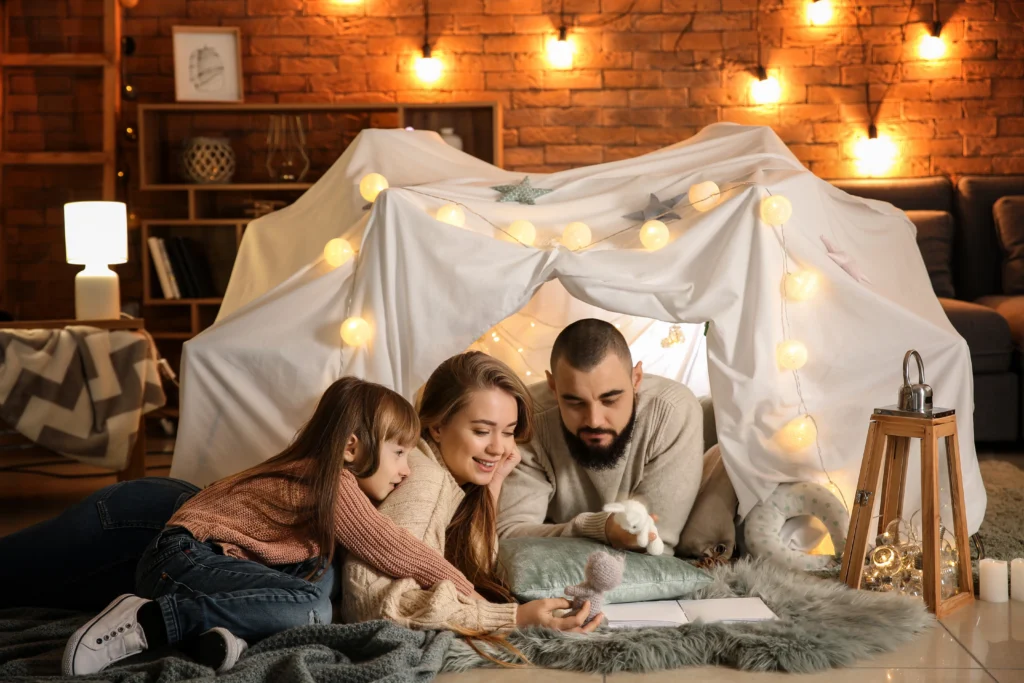
Parents and caregivers often need help understanding the value of free play. Host workshops or send newsletters showing how child-led play supports learning and development.
When families understand why it matters, they’ll support it more at home and school.
Promoting free play is not about chaos. It’s about crafting the right physical, emotional, and social environment for children to grow through their ideas.
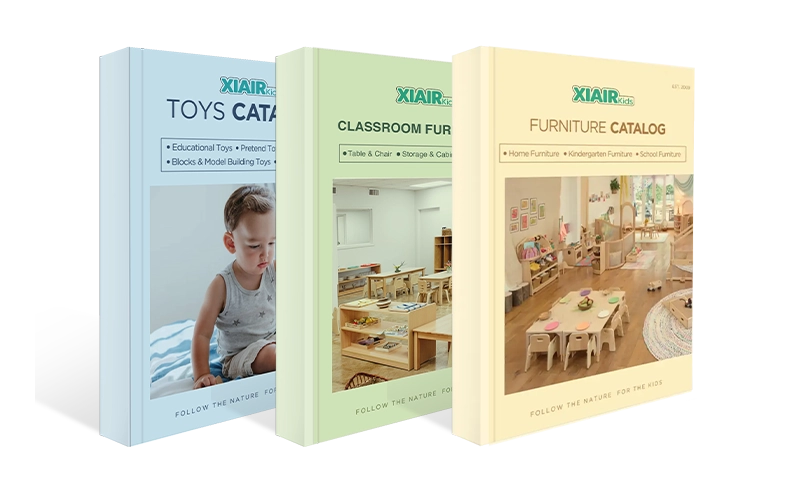
Child-Directed Play
Child-directed play is the essence of free play—it happens when a child initiates, leads, and evolves the play based on their interests and imagination. In this type of play, adults take a backseat, providing support without controlling the process.
In this type of activity, the child takes the lead. The adult observes, supports when needed, and provides an environment rich with open-ended materials.
For example, a child pretending to run a bakery isn’t just playing—they’re practicing math (counting), language (conversation), social skills (negotiation), and creativity (imagination) all at once.
We don’t need to tell them what to learn—they’ll discover it through play.
Imaginative Play Ideas
Imaginative play is where creativity and learning collide. It allows children to invent worlds, act out roles, and express ideas that are hard to articulate in words. This kind of play in early childhood builds the foundation for storytelling, empathy, and flexible thinking.
Here are some proven imaginative play ideas that work well in preschool settings:
Dramatic Play Corner
Set up a space where children can pretend to be anything—a parent, a chef, a shopkeeper, or a vet. This corner can include:
- Dress-up clothes (hats, scarves, aprons)
- Toy phones, cooking tools, shopping bags
- A small table and chairs to mimic real-life spaces
This type of dramatic play encourages:
- Role understanding
- Vocabulary building
- Emotional processing
It’s also a great activity for social collaboration.
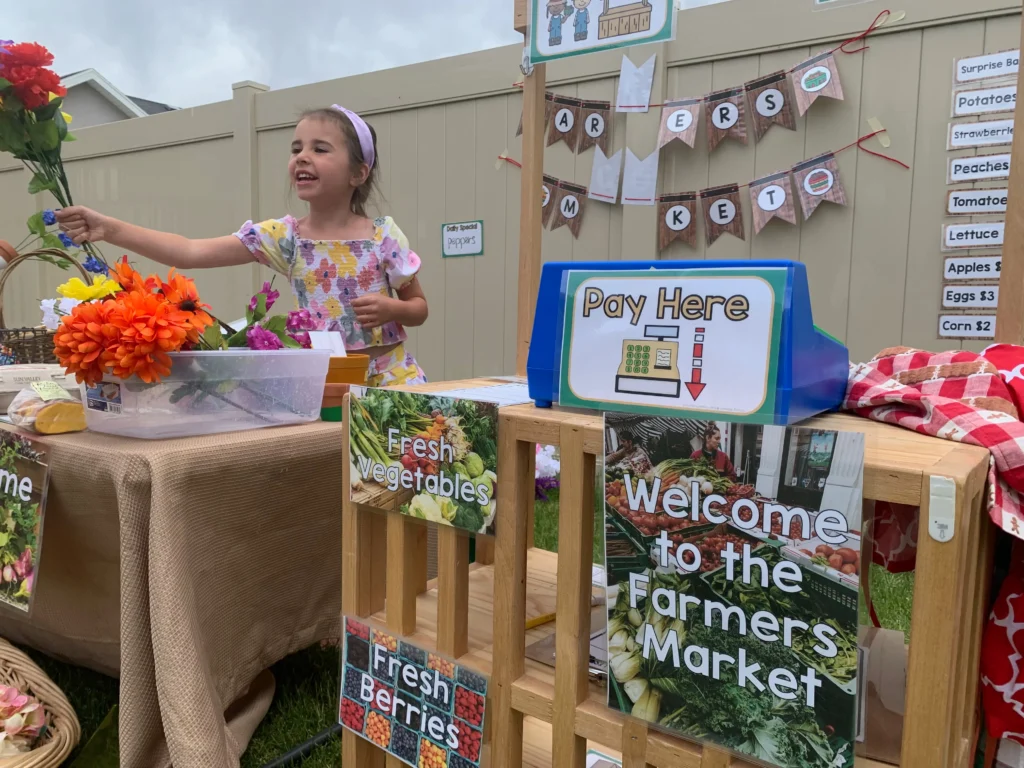
Loose Parts Play
Loose parts are materials that children can move, combine, and redesign freely. These can include:
- Wooden blocks
- Fabric scraps
- Cardboard tubes
- Stones, shells, or natural items
Children might use their ideas and rules to build castles, cities, or spaceships. This kind of activity fuels both engineering thinking and fantasy.
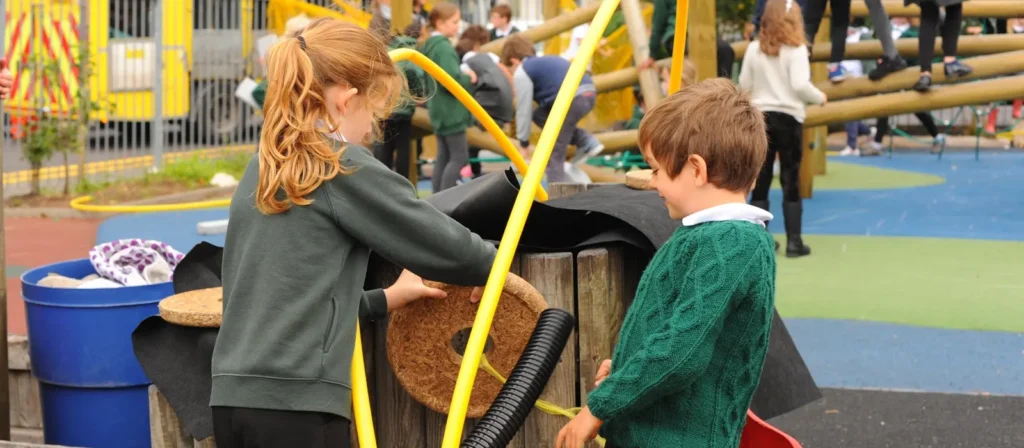
Small World Play
Give children miniature items to create their own stories. For example:
- Animal figurines with grass mats and twigs
- Dolls with small furniture
- Cars with cardboard roads
Small-world play helps with:
- Sequencing (what happens first, next, then)
- Emotional storytelling
- Fine motor skills
It’s perfect for children who are more introverted or prefer solo play.
Open-Ended Prop Stations
Sometimes, the most straightforward items make the best props:
- Scarves become superhero capes
- Boxes become cars or spaceships
- Blankets become tents or hiding spots
The fewer instructions, the more imagination. That’s why our furniture at TOP Montessoris is never over-designed—we leave room for children to decide how to use the space.
Things to Keep in Mind
Supporting free play doesn’t mean leaving everything to chance. It requires thoughtful planning, consistent observation, and the right environment.
Here are a few essential principles to remember:
Environment Shapes Behavior
Children will only engage in rich play if the space invites it. That means:
- Clear, defined play areas
- Access to open-ended materials
- Calm, uncluttered layout
- Furniture designed for independence and flexibility
Time Must Be Protected
Children need uninterrupted time to fall into deep, imaginative play. Rushing them between scheduled lessons or over-structuring their day reduces the depth of their engagement.
Aim for:
- At least one hour of free play daily
- Flexibility in transitions (don’t cut off rich play suddenly)
- Opportunities for both indoor and outdoor free play
Repetition is Not Boring—It’s Learning
A child pretending to cook the same “meal” every day is not stuck—they’re mastering a concept. Repetition builds confidence, memory, and skill refinement.
Allow children to return to the same play ideas. They’ll go deeper each time.
Observation Is More Powerful Than Instruction
As adults, we often want to intervene and teach. But in free play, our job is watching, listening, and learning.
Try this:
- Sit quietly nearby
- Write down what the child is doing
- Ask open-ended questions like, “What are you building?” or “Can you show me how that works?”
These small acts validate the child’s process and give insights into their thinking.
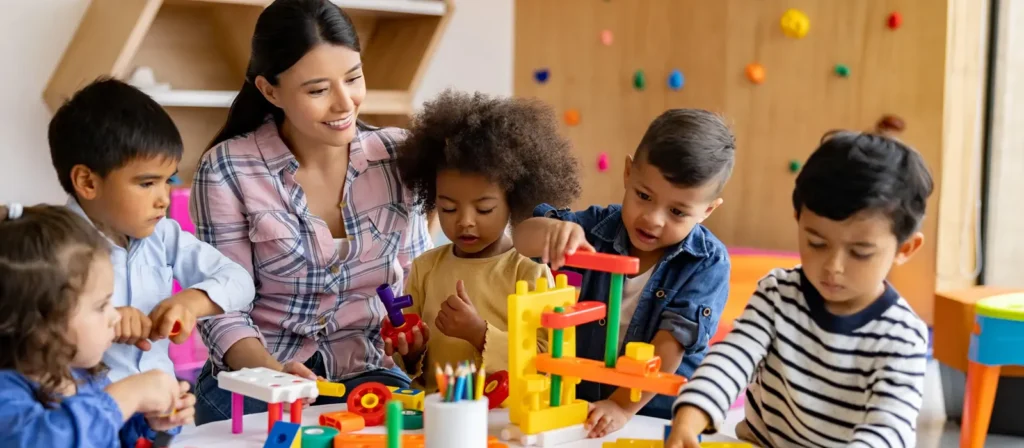
There’s No “Right” Way to Play
Some children play loudly and physically, while others play quietly and imaginatively. Some like to collaborate, while others prefer to play alone.
All of it is valid. All of it is valuable.
Avoid judging or redirecting play unless safety is a concern. Trust the child’s instincts—they know what they need.
Free play isn’t chaotic—it’s full of structure the child creates and controls. And when we respect it, we allow learning to emerge in the most authentic and lasting ways.
Conclusion
Free play is not an extra—it’s essential. It allows children to imagine, build, connect, and grow. From emotional strength to cognitive skills, every central domain of early childhood development is shaped through free, child-led activity.
As educators, designers, and school decision-makers, our role is to protect this space—design classrooms, choose furniture, and plan schedules prioritizing play. When we give children the freedom to play, we provide them with the freedom to become who they are.
At TOP Montessoris, we believe that a great learning experience starts with a thoughtfully designed environment. As a manufacturer and supplier with over 20 years of experience in early childhood furniture, we offer full-service solutions—from classroom layout planning to furniture customization, production, quality inspection, and delivery. Whether you’re outfitting a single room or an entire preschool, we’re here to help you create the ideal space for children to play, learn, and thrive.
More Related Content
Creating an Inspiring Montessori Classroom: A Comprehensive Guide
Innovative Dramatic Play Furniture for Creative Learning








